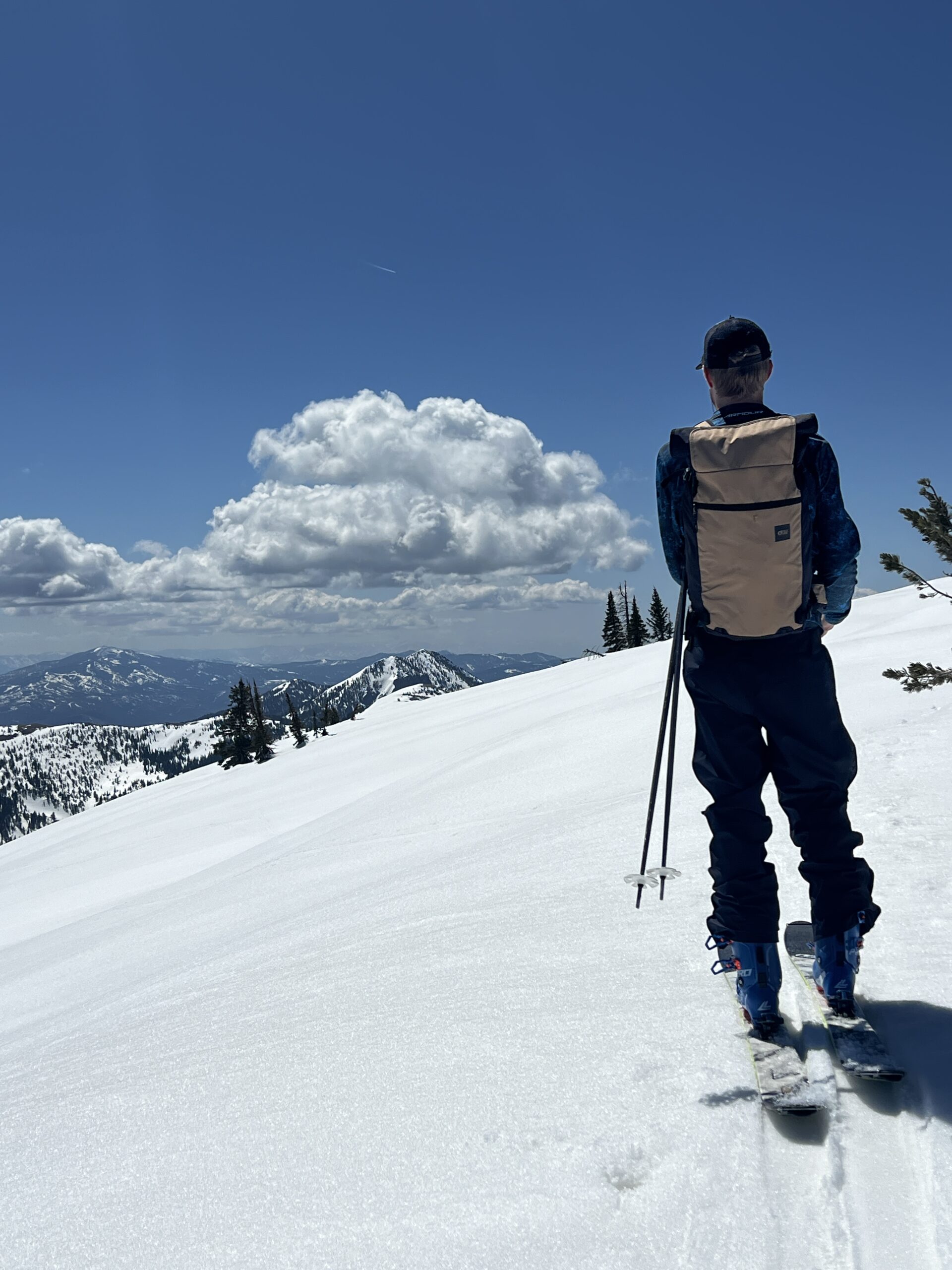Open Mic is the series on BLISTER where we invite various people in the outdoor industry to say what they have to say, and share whatever it is they feel like sharing at this particular point in time.
Today, we hear from Sander Hadley:
About Sander Hadley:
Sander is a professional skier from Pocatello, Idaho. To hear his story in his own words, listen to episode 207 of the Blister Podcast.

What is the role of an outdoor athlete?
Obviously, if the athlete is sponsored, the job is to market the products sold by their sponsor.
(Let’s all take a minute and remember Ricky Bobby recklessly selling his windshield to Fig Newton at Daytona back in ‘05.)
What other roles do athletes play?
If there is one clear-cut answer that I have heard from multiple sources — including The Fifty meme man, Cody Townsend — it is for athletes to inspire. Climbing up mountains and doing rad stuff on the way down, hopefully, gets others excited to activate and do something themselves.

I’d like to argue that athletes are actually the drivers of culture. That’s what makes skiing, snowboarding, biking, surfing, and skateboarding such a large part of our identity — these cultures are lifestyles. Your whole identity could be largely tied to an outdoor activity. From what you eat, what you drive, what you wear, and what music you listen to, these sports influence us deeper than physical movements. From white kids bumping reggae in cloudy ski-area parking lots, to the alcohol-fueled shenanigans happening on sun-stained decks on spring afternoons, there is more than just skiing going on in skiing culture.
While surfers also do stimulants and depressants, the culture of surfing has drawn a direct link to the protection of natural places through the identity of being a surfer. Go to a surf parking lot, and you’ll be inundated with Surfrider foundation stickers. Surfrider’s mission statement is:
“The Surfrider Foundation is dedicated to the protection and enjoyment of the world’s oceans, waves, and beaches, for all people, through a powerful activist network.”
Waves crash onto beaches every day, year-round. Not all waves are surfable, but the ocean isn’t drained every off-season. However, snow melts every spring/summer. It’s like magic: how can we ride down mountains in a matter of seconds that take much closer to hours to hike down in the summer?
Given the ephemeral nature of snow, it seems to me that our connection to nature should be even stronger for skiers than it is for surfers.
But let’s get back to outdoor athletes in general.
Athletes are an extension of marketing. Outdoor brands, especially newer ones, are legitimized by their athletes. Marketing does the talking about a product’s technology, while athletes showcase the product’s performance. And each year, there is a new collection to market, even if the gear athletes already have is still usable.
This is where athletes can have an impact on the backend. By advocating for carry-over collections and durable products, athletes can influence the companies they are sponsored by to market conscious consumption.
Athletes have influence over the communities that follow them. From what people purchase, to how they think about their connection to these activities, and the arenas in which they are done. Athletes have the ability to drive consumers. So I’d like to argue that athletes have a responsibility to convey values and actions consistent with the climate crisis we are living in.

Outdoor gear, just like other consumer goods, comes at more than just a financial cost. Fossil fuels (coal, oil, and gas), and water, are used to produce our jackets, pants, and other accessories. Scientists have shown fossil fuels greatly affect the stable climate and healthy ecosystems needed to do the sports and activities we love.

As athletes, we can positively contribute to change through action, promoting a different way of consumption and lifestyle. Walking the walk if you will. Highlighting gear repairs to followers on social media is a simple start. Therefore, athletes have an unmatched ability to be in the middle of consumers and companies, advocating the brands to make less while simultaneously advocating for consumers to make the act of keeping their gear going “cool.”
We’ve all seen Patagonia’s legendary “don’t buy this jacket” campaign, but how do we get athletes to pull on those culture levers? What if we inspired consumers to do more with less? A lot of outerwear brands have cultivated repair initiatives. One prominent outerwear brand revived a jacket from the mid-2000s by re-waterproofing it and altering the cut to feature it in a new marketing campaign with one of their top athletes.
What if we made repairing and making gear last for as long as possible the cool thing to do? What would that look like? What would need to be done?
At the end of the day, athletes cultivate the culture. And the greatest challenge of humankind is upon us. My hope is that athletes will step up to the challenge in ways that mobilize people. Because if we don’t, we will just be perpetuating the false sense of importance grumpy people often place on outdoor athletes.

